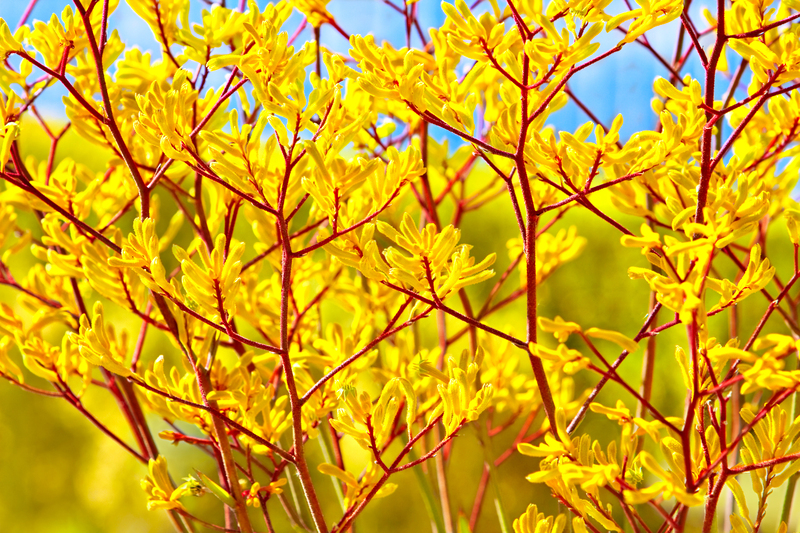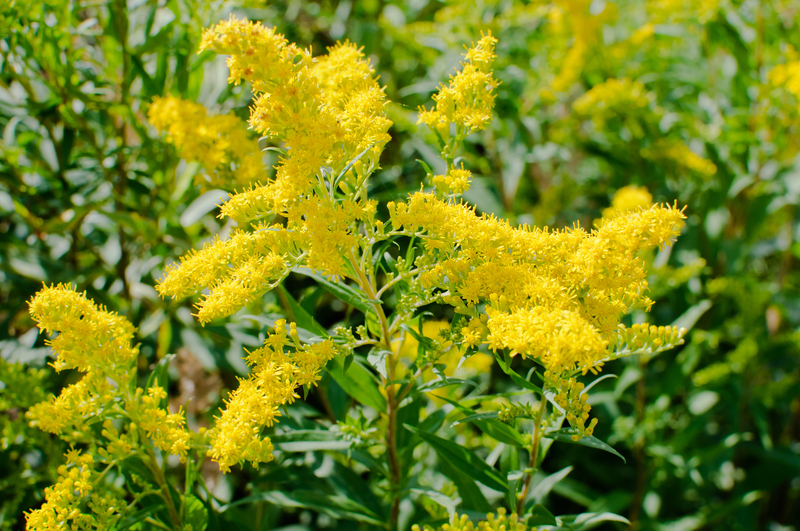Gardening with Purpose: Aiding Climate Change One Plant at a Time
Posted on 03/07/2025
Gardening with Purpose: Aiding Climate Change One Plant at a Time
Climate change has become one of the most pressing concerns of our era. While large-scale solutions such as renewable energy and carbon capture dominate headlines, it's easy to underestimate the difference individuals can make at home. Purposeful gardening--intentional choices in your backyard or community space--offers a tangible way for each of us to contribute positively to the environment. This guide explores how climate-focused gardening can help mitigate climate change and offers practical tips for creating your own sustainable green space.
Why Gardening Matters in the Fight Against Climate Change
Gardens are more than just places of beauty and relaxation. Through photosynthesis, plants absorb carbon dioxide (CO2), a key greenhouse gas, helping to reduce the overall carbon footprint. Moreover, gardens foster biodiversity, support pollinators, improve soil health, and help manage water resources, all of which play crucial roles in addressing climate change.
- Carbon Sequestration: Trees, shrubs, and other plants capture and store atmospheric carbon, contributing to a reduction in greenhouse gases.
- Biodiversity Support: Diverse gardens provide habitat for insects, birds, and other wildlife, helping maintain healthy ecosystems.
- Watershed Protection: Root systems improve soil structure, reducing runoff and enhancing water absorption.
- Microclimate Regulation: Urban gardens can cool local temperatures, reducing the urban heat island effect.

The Principles of Climate-Smart Gardening
1. Native Plants Benefit the Environment
Native gardening forms the cornerstone of purposeful, climate-friendly landscaping. Locally adapted species thrive in their natural habitat, requiring less water, fertilizer, and pesticide than non-native counterparts. Moreover, native plants provide food and shelter for area wildlife, making your garden a biodiversity hotspot.
- Lower Inputs: Native species are naturally adapted to regional climate and soil, reducing the need for artificial watering and chemical support.
- Pollinator Relationships: Native blooms attract essential pollinators--such as bees, butterflies, and hummingbirds--bolstering the local food web.
2. Soil Health and Carbon Storage
A healthy soil ecosystem is critical for carbon sequestration and plant vitality. Practices such as composting, mulching, and minimal tillage help increase organic matter and boost soil microbes, which in turn store more carbon.
- Compost: Turn kitchen scraps and yard waste into valuable, nutrient-rich soil amendments.
- Mulching: Covering soil suppresses weeds, conserves moisture, and provides habitats for beneficial organisms.
- Minimal Tillage: Disturb soil as little as possible to preserve structure and microbial life.
3. Sustainable Water Management
Effective water management is vital in a world of increasingly erratic weather patterns. Rain gardens, permeable pathways, and rain barrels are excellent additions to climate-resilient landscapes.
- Rain Gardens: Shallow, planted depressions capture stormwater, allowing it to filter into the ground and nourish nearby plants.
- Water Harvesting: Collect rainwater from rooftops to irrigate your garden during dry spells.
- Xeriscaping: Design landscapes with drought-resistant plants to minimize irrigation needs.
4. Growing Your Own Food
Home-grown produce reduces dependence on foods with high transportation emissions, and can be more easily grown with fewer chemicals. By creating a sustainable food garden, you make a direct impact on your personal carbon footprint.
- Seasonal Eating: Focus on crops that thrive in your local climate and season.
- Perennial Edibles: Incorporate fruit trees and berry bushes with annual vegetables to provide diversity and continual harvests.
- Small-Space Techniques: Use vertical gardening, containers, and succession planting to maximize output even in limited areas.
Step-by-Step Plan for Gardening with Purpose
Ready to get started on your journey to climate change gardening? Follow this step-by-step approach to turn your gardening efforts into meaningful environmental action.
Step 1: Assess Your Space and Climate
Begin by understanding your local environment. Examine soil type, sunlight patterns, rainfall, and hardiness zone. Tailoring your plant choices and gardening approaches to your unique environment ensures that your garden thrives without excess resources.
Step 2: Choose Plants with Higher Environmental Value
Prioritize native species, pollinator-friendly flowers, and deep-rooted perennials. Groups such as coneflowers, milkweed, oak trees, and serviceberry not only flourish with minimal intervention but also support bees, butterflies, and birds essential to ecosystem health.
- Research local plant lists and nurseries specializing in natives.
- Mix layers--ground covers, shrubs, and trees--for greater biodiversity and improved carbon storage.
- Include a mix of flowering and fruiting plants to benefit wildlife all year.
Step 3: Improve Soil Management Practices
Healthy soil is the foundation of purposeful gardening. Add compost regularly, mulch to suppress weeds and retain moisture, and avoid over-tilling, which can release stored carbon and damage microbial networks required for plant health.
Step 4: Implement Water-Saving Strategies
Install a rain barrel, use drip irrigation systems, and consider grouping plants by water needs. Mulch and organic matter will help retain soil moisture, cutting down water use even further.
Step 5: Reduce Chemical Use and Garden Waste
Eliminate or minimize synthetic fertilizers, pesticides, and herbicides that harm beneficial bugs and contamination soils and waterways. Instead, use compost, practice crop rotation to deter pests, and create diversified plant communities that naturally resist pests and disease.
- Hand-pick pests or use barriers such as row covers.
- Rotate vegetable crops yearly to break pest cycles.
- Create a brush pile or leave seed heads for overwintering pollinators.
Step 6: Grow and Share Edible Plants
Growing your own fruits, vegetables, and herbs shortens the supply chain and reduces your food's environmental impact. Share excess harvests with neighbors or local food banks to foster community resilience.
Step 7: Encourage Community and Education
Climate gardening has ripple effects beyond your fence line. Share seeds, host workshops, or volunteer at community gardens. The greater the collective effort, the more significant the impact.
Plants that Pack a Climate Punch
Some plants are especially impactful in climate-friendly gardens due to their rapid growth, deep root systems, or attractiveness to wildlife. Consider adding the following to maximize the positive effects of your climate-resilient garden:
- Trees: Oak, maple, beech, and fruit trees sequester significant amounts of carbon while providing shade and habitat.
- Prairie Grasses: Little bluestem, switchgrass, and big bluestem build deep root systems, storing carbon and fortifying soil.
- Flowering Natives: Milkweed, goldenrod, and asters support monarchs and pollinators.
- Edible Perennials: Asparagus, rhubarb, berry bushes, and nut trees offer long-term food sources and require little replanting.
Overcoming Barriers: How Anyone Can Practice Purposeful, Climate-Conscious Gardening
Individuals may believe that impactful gardening requires significant land or resources. In reality, every planting, lawn conversion, or container garden helps. Consider these options:
- Small Spaces: Utilize balconies, patios, or vertical planters for herbs and small vegetables.
- Community Projects: Join shared gardens or start pollinator patches in neighborhood parks.
- Lawn Conversion: Replace even a portion of turf grass with native beds or meadows for maximum impact.
- Advocacy: Advocate for green infrastructure in schools and municipalities--every tree or rain garden counts!

Gardening's Bigger Impact: The Social and Psychological Value
Beyond environmental benefits, sustainable gardening builds stronger, more resilient communities. Gardens become spaces of biodiversity, well-being, and education. School gardens teach children about food origins, ecology, and stewardship. Community plots unite neighbors and foster environmental citizenship. Gardening also offers mental health benefits, reducing stress, boosting mood, and encouraging physical activity.
Stories of Climate Change Gardening in Action
All over the world, people are embracing climate-conscious gardening. Victory gardens from the 1940s have evolved into "climate victory gardens", focusing on food production and carbon storage. Community groups in cities are transforming vacant lots into pollinator parks and edible forests. These efforts demonstrate that, one plant at a time, we can build landscapes that nurture both people and the planet.
Conclusion: Start Gardening with Purpose Today
Every action counts in the fight against climate change. By adopting the practices of purpose-driven gardening--from planting natives and managing water wisely to growing your own food and sharing knowledge--you become part of a global solution. Transform your outdoor space into an engine for climate resilience, personal joy, and community well-being. With each carefully chosen plant, you truly aid climate change one plant at a time.
Are you ready to make your garden a force for environmental good? Start small, start today, and watch your purposeful gardening efforts blossom into climate solutions for tomorrow.

